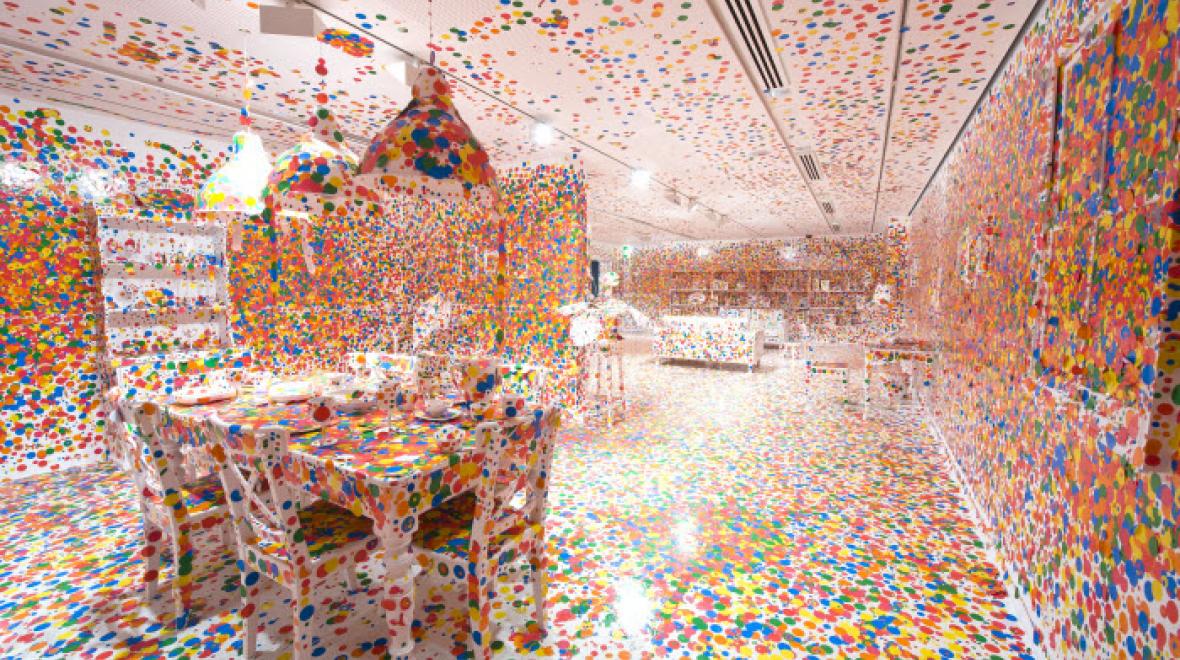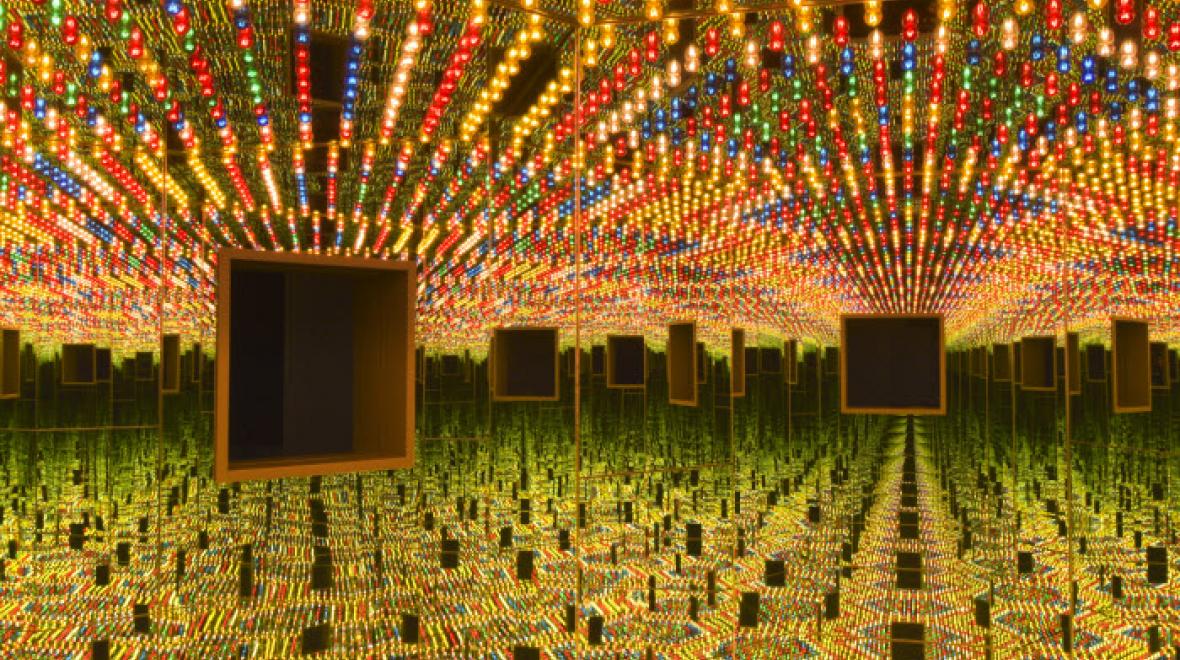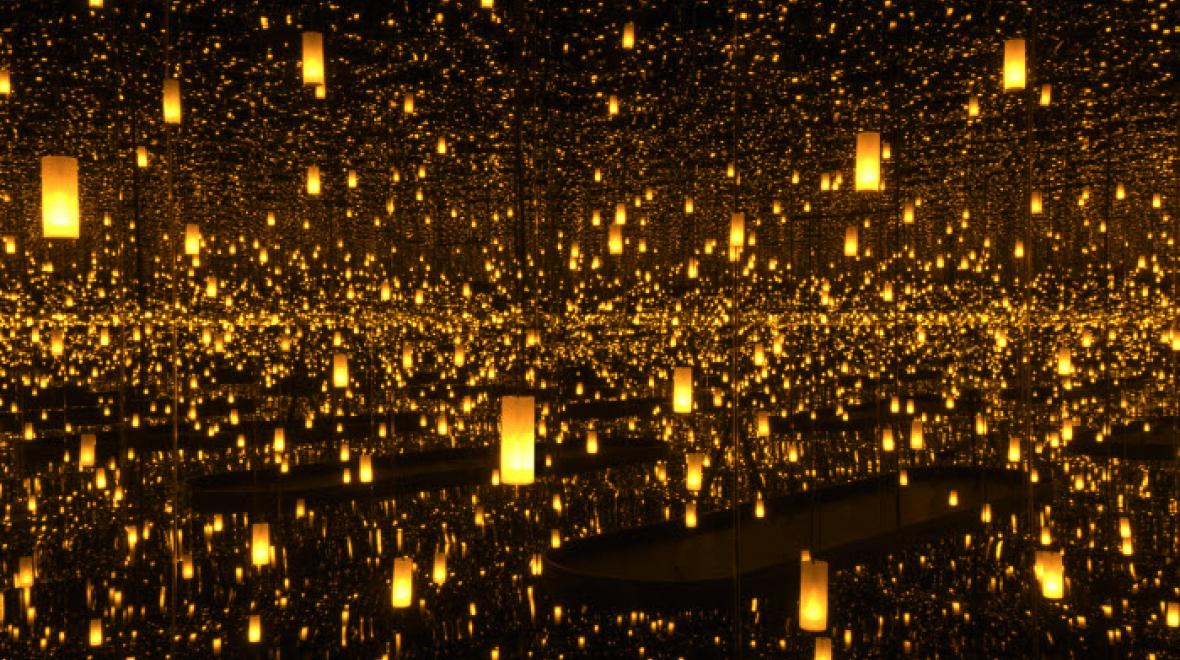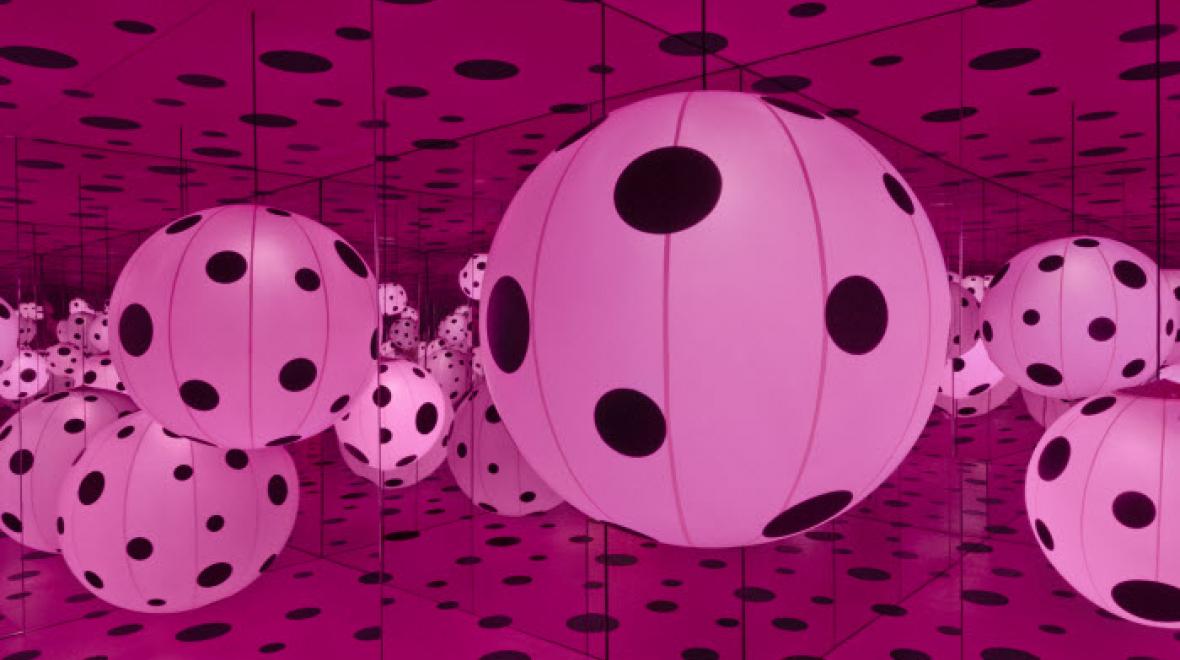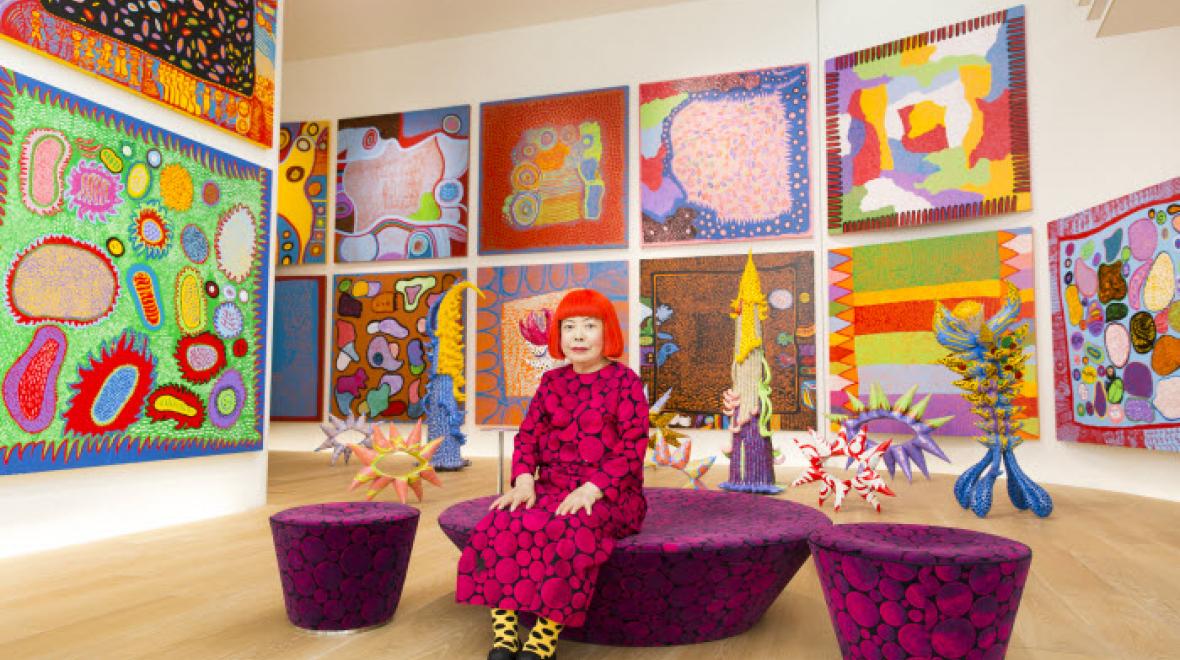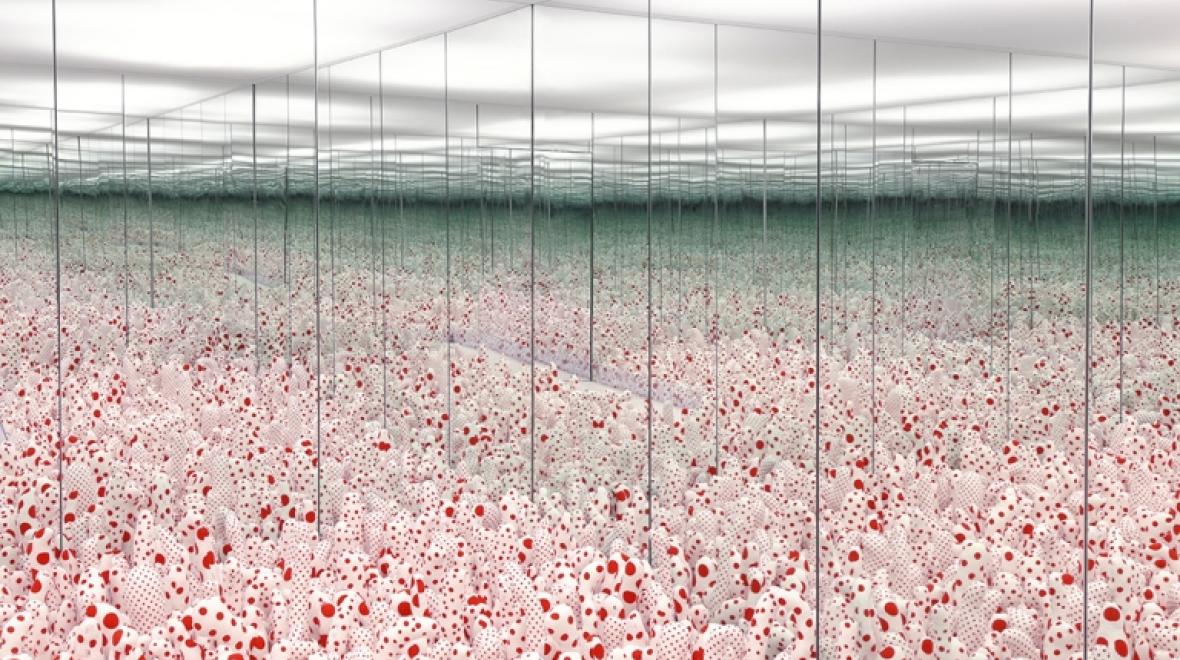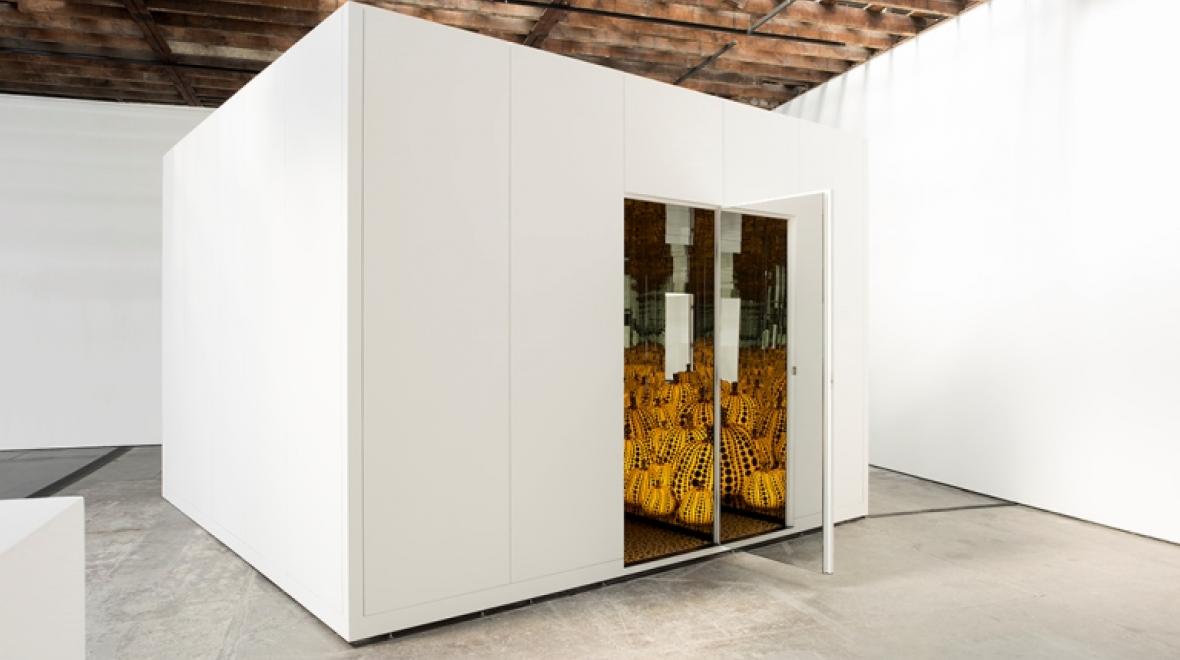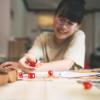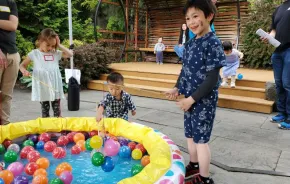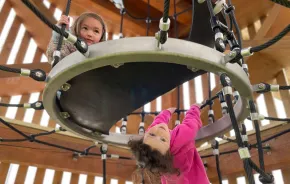Bottom line
Seattle Art Museum's super-hot new exhibit, Infinity Mirrors, is challenging for families, but the payoff is worth the effort.
Highlights
My definition of family-friendly is fairly loose: music festivals, trendy restaurants, the ballet, long plane rides – everything is fair game for my family. But restrictive viewing requirements and the promise of long lines made me nervous about bringing my two daughters to Infinity Mirrors, the much-anticipated exhibit that opened at Seattle Art Museum on June 30. So I was relieved and surprised when the exhibit proved to be one of the most engaging, stimulating and rewarding arts experiences we’ve attempted so far. My 8-year-old daughter described Infinity Mirrors as “infinity awesome!”
The exhibit spans the 65-year career of legendary Japanese artist Yayoi Kusama, from her early abstract watercolors about growing up in wartime Japan, through recent works never before seen on the West Coast. The heart of the exhibit is her iconic, immersive, multi-reflective Infinity Mirror Rooms.
The exhibit proved to be one of the most engaging, stimulating and rewarding arts experiences my family has attempted
The exhibit is laid out like a normal exhibit, with drawings and videos on the walls and sculptures in the middle of the room. Among those sculptures are the Infinity Mirror Rooms. Four of the five Infinity Mirror Rooms are big enough to enter (rather than view through a peephole), but the space inside is very small, so you don’t so much “walk through” as “walk into." You have to wait in a different line to see each of them. Above all: You can't touch anything (with one exception).
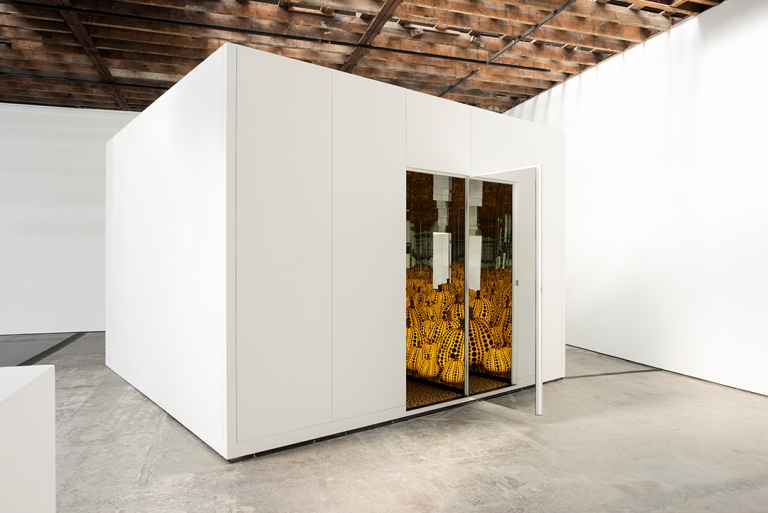
This will be too much for many kids. But for those who can handle those restrictions, the rewards of these mesmerizing installations are, well, infinite.
Seussian soft sculptures, friendly polka dots and pumpkins create a playful atmosphere that young children will love. In Phalli’s Field, a room constructed like a big box, you walk to a small viewing platform on level with and surrounded by tuberous (somewhat phallic) sculptural objects. The interior walls and ceiling are mirrored, so that you and the sculptural objects are reflected into infinity. Aftermath of Obliteration is structurally the same as Phalli’s Field, except the “objects” are LED lights suspended from the ceiling.
The newest Infinity Room, All the Eternal Love I Have for the Pumpkins (2016), features an infinite field of Kusama’s signature pumpkins, lit from inside.
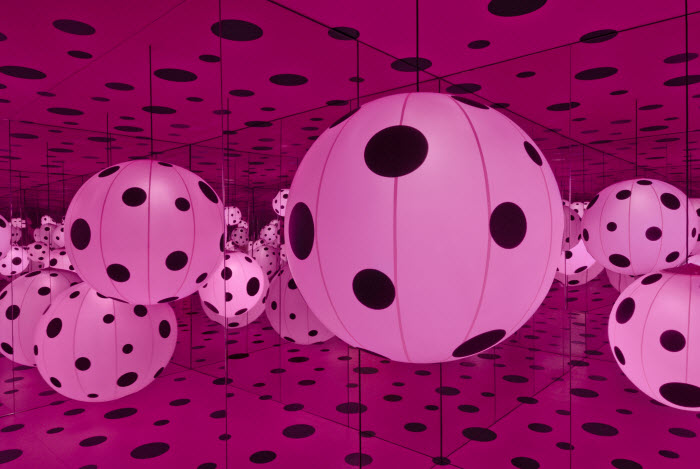
We met a family at the exhibit whose 19-month-old (in a carrier) was captivated by the blinking lights and bright colors. My own kids, ages 13 and 8, enjoyed their visceral sensations inside the Escher-like installations – experiencing minor vertigo and claustrophobia in the same room. (Don’t forget to look up.)
Older teens will appreciate Kusama’s subtle subversion. Beside her bipolar fascination with infinity and obliteration, Kusama uses an architect’s skill in directing users’ intuitive responses to the space. But she misdirects. In Dots Obsession, for example, a polka dot is placed right where you want to rest your hand to peek inside a sphere, and giant balloons block movement in a mirror room where you’re not confined to a platform. (But remember: You can't touch. Anything.)
The final installation is the payoff for restraint. Rooted in the happenings of 1960s, communal artwork, The Obliteration Room invites visitors to obliterate its pristine white IKEA-like space by placing colorful dot stickers on any surface.
Notes for parents
The exhibition contains mature content. Besides the sort-of phallic sculptures, photographs (toward the back of the exhibit and easily overlooked) of happenings include some nudity. But the real challenge comes from the rigorous demands placed on the viewer by the artworks themselves. Each Infinity Room is staffed, and the attendant will give precise instructions specific to the room. In general: Leave bags outside, don’t touch and leave when time is up.
Visitors only get 20-30 seconds per room. Kusama means for viewers to focus on their intense first impressions. Even so, kids may want to line up again for their favorites, just as they might for a roller-coaster. My kids happily waited over 10 minutes in line to repeat Aftermath of Obliteration, which made one of them feel like she was floating in outer space, and made the other feel like Rapunzel watching the floating lanterns in Disney’s Tangled.
More tips for parents:
- To avoid touching the artwork, it helped my kids to think of entering the Infinity Rooms as playing an art game with elaborate rules.
- While kids tend to move through museums more quickly than adults, plan some extra time for standing in line to enter each of the Infinity Rooms (lines may reach up to 20 minutes when the exhibit is at capacity).
- No food is allowed in the galleries. Be sure to give young children a snack before entering.
- Space is tight inside the Infinity Rooms. Strollers and wheelchairs have to back out – there is not enough room to turn around. Consider wearing babies and toddlers.
- Kusama’s playful art lends itself to fun merchandising. Even if you normally rush past the gift shop at the end of exhibits, you might enjoy this one.
- Although the Infinity Rooms draw the most attention, don't miss the sculptures and paintings on display (some of which can be enjoyed while standing in line).
- If your kids love Kusama’s art as much as mine do, consider attending Infinity Flower, a collection of Yayoi Kusama’s films and videos being shown on the evening of July 12 or participating in the communal Pom Pom Garden creation at Volunteer Park on July 13.
If you go...Where: Seattle Art Museum, 1300 First Ave., Seattle When: The exhibit runs through September 10, with special hours (eg closed Tuesday, open later on Thursday and Friday). Check the website. Tickets: You need timed tickets. Advance tickets are already sold out through the end of the exhibition, but a limited number of timed tickets will be available daily on a first-come, first-served basis for day of entry, limited to four per person. On-site ticket sales begin at 10 a.m. For the best chance of getting a ticket, be in line when the museum opens on a weekday morning. Have a backup plan in case tickets are not available when you arrive (Hint: Pike Place Market, with its newly opened MarketFront, is only blocks away). Daily prices: $34.95 for adults; $32.95 for senior (65+); $29.95 military (with ID); $24.95 students and teens (13–17). The exhibit is free for children (12 and under) and SAM members. Discounts: First Thursday is 50 percent off. Consider a membership, as members get in to special exhibits for free, so membership pays for itself pretty quickly. Info: kusama.site.seattleartmuseum.org Video: This NPR segment provides an intro to Kusama's work. |




